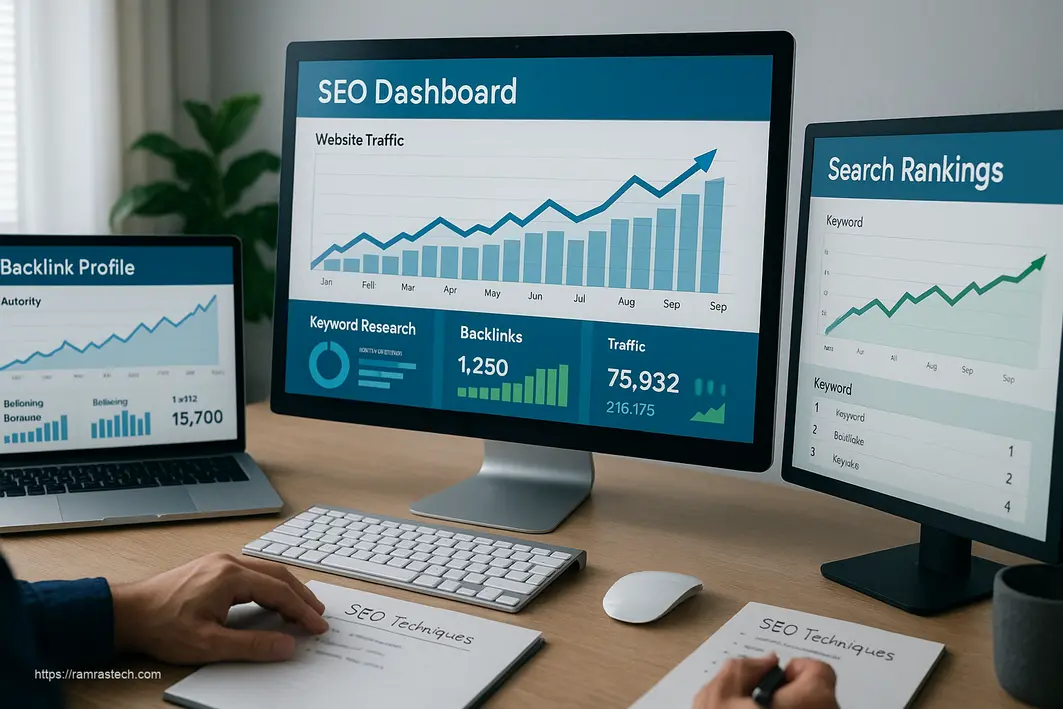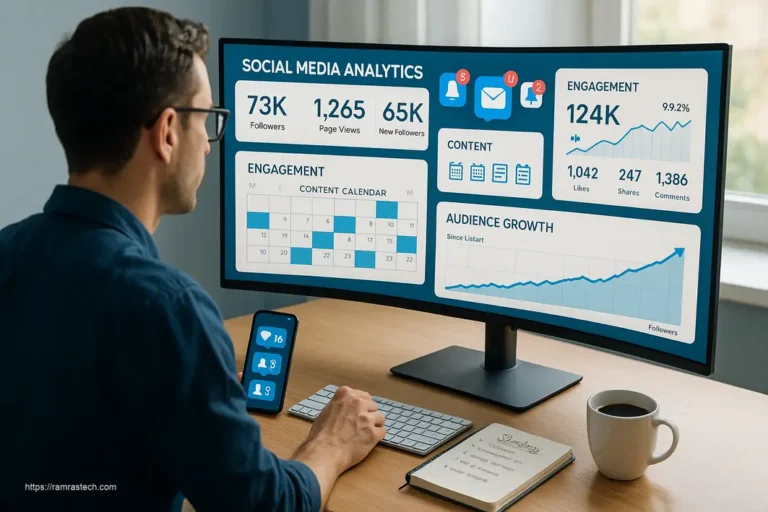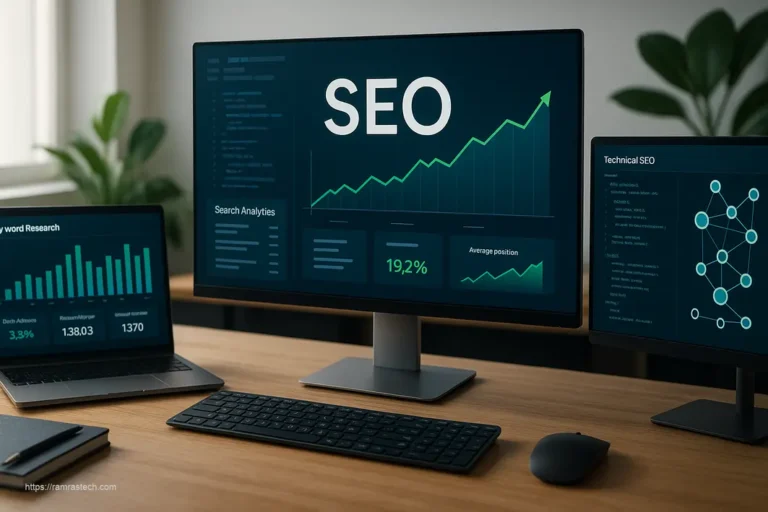Top 8 SEO Techniques to Elevate Your Search Engine Rankings

Ever wondered why some websites consistently appear at the top of search results while others remain buried in digital obscurity? The secret lies in mastering effective SEO techniques that align with current search engine algorithms and user expectations. Whether you’re a business owner looking to increase visibility or a marketing professional aiming to drive more organic traffic, understanding and implementing the right SEO strategies can make all the difference in your digital success.
What is Search Engine Optimization (SEO)?
Search Engine Optimization (SEO) represents a collection of techniques and strategies designed to improve how search engines find, understand, and rank your website. Rather than paying for visibility (like with PPC advertising), SEO focuses on earning organic visibility through relevant, high-quality content and technical excellence that satisfies both search engines and users.
The digital landscape is constantly evolving, with search engines updating their algorithms hundreds of times annually. What worked yesterday might not work tomorrow, making ongoing SEO education and adaptation essential for sustainable results.
Why SEO Techniques Matter More Than Ever in 2025
The days of manipulating search engines with keyword stuffing and link schemes are long gone. Modern SEO techniques require sophistication, authenticity, and user-centricity for several compelling reasons:
- Heightened competition: With over 1.13 billion websites online, standing out requires increasingly refined strategies.
- Algorithm intelligence: Search engines now use advanced AI to better understand content quality, user intent, and website experience.
- User expectations: Today’s users demand immediate answers, seamless experiences, and trustworthy information.
- Mobile dominance: With mobile searches representing over 60% of all queries, mobile optimization isn’t optional.
- Voice search growth: The rise of voice assistants has transformed how people search, requiring new optimization approaches.
According to recent studies, websites appearing on the first page of Google search results capture 91.5% of all traffic, with the top three positions alone securing over 75% of clicks. This stark reality underscores why mastering effective SEO techniques isn’t just beneficial—it’s essential for digital survival.
15 Powerful SEO Techniques to Implement Today
1. Comprehensive Keyword Research and Strategic Implementation
The foundation of successful SEO remains identifying the right keywords—the terms and phrases your target audience uses when searching for what you offer. However, modern keyword research goes beyond simple volume metrics to focus on:
- Search intent analysis: Understanding whether searches are navigational, informational, commercial, or transactional
- Keyword difficulty evaluation: Assessing competition levels to identify realistic ranking opportunities
- Semantic keyword clusters: Grouping related terms to build topical authority rather than isolated keyword targets
Tools like SEMrush, Ahrefs, and Google’s Keyword Planner can reveal valuable insights about keyword potential, but the real skill lies in strategic implementation. Instead of awkwardly forcing keywords into content, focus on creating comprehensive resources that naturally address all aspects of a topic.
2. E-E-A-T-Focused Content Creation
Google’s Quality Rater Guidelines emphasize E-E-A-T (Experience, Expertise, Authoritativeness, and Trustworthiness) as crucial ranking factors. Creating content that demonstrates these qualities means:
- Showcasing genuine firsthand experience with the subject matter
- Establishing clear author expertise through credentials or demonstrated knowledge
- Building site authority through thorough, accurate, and valuable information
- Enhancing trustworthiness with proper citations, references, and transparency
High-performing content in 2025 addresses user needs comprehensively while demonstrating clear expertise. Rather than producing shallow, 500-word articles that barely scratch the surface, successful sites are investing in thorough, well-researched content that thoroughly answers user questions.
3. Technical SEO Optimization
Technical SEO forms the infrastructure that allows your content to be properly crawled, indexed, and ranked. Key technical SEO techniques include:
- Core Web Vitals optimization: Improving page loading speed, interactivity, and visual stability metrics
- Schema markup implementation: Adding structured data to help search engines understand content context
- XML sitemap maintenance: Ensuring search engines can discover and index all important pages
- Mobile responsiveness: Guaranteeing seamless experiences across all device types
- HTTPS security: Providing secure connections for all website visitors
Technical issues can undermine even the best content strategy. Regular technical SEO audits using tools like Google Search Console, Screaming Frog, or Sitebulb can identify critical issues before they impact rankings.
According to recent studies, websites that load in under 3 seconds have 7× higher conversion rates than slower competitors, highlighting why technical optimization remains a critical element of SEO techniques.
4. User Experience (UX) Optimization
Search engines increasingly evaluate sites based on how users interact with them. Positive engagement signals like longer time-on-page, lower bounce rates, and higher interaction rates correlate strongly with better rankings. Effective UX optimization includes:
- Intuitive navigation: Creating clear site structures that help users find information easily
- Content readability: Using appropriate formatting, bullet points, and concise paragraphs
- Strategic CTAs: Guiding users naturally to the next logical step in their journey
- Minimal distractions: Eliminating unnecessary popups, autoplay videos, or overwhelming ad placements
- Accessibility features: Ensuring content is usable by all visitors, including those with disabilities
Google’s Page Experience Update formalized UX as a ranking factor, making user-focused design more important than ever. Sites that prioritize user experience in website design consistently outperform competitors with subpar interfaces.
5. Strategic Link Building
Despite countless algorithm changes, backlinks remain one of the most powerful ranking signals. However, modern link building is about quality, relevance, and natural acquisition rather than quantity. Effective link-building SEO techniques include:
- Original research publication: Creating data-driven content that naturally attracts citations
- Digital PR campaigns: Securing media coverage and editorial links through newsworthy content
- Strategic guest posting: Contributing valuable content to relevant industry publications
- Relationship-based outreach: Building genuine connections with industry peers rather than sending mass link requests
- Broken link reclamation: Finding and replacing broken links on external sites with links to your content
According to industry research, pages ranking in the top positions typically have 3.8× more backlinks than those ranking below position #10, demonstrating why strategic link acquisition remains essential.
6. Local SEO Optimization
For businesses serving specific geographic areas, local SEO provides tremendous opportunities to connect with nearby customers actively searching for solutions. Local SEO techniques include:
- Google Business Profile optimization: Maintaining complete, accurate business information with regular updates and posts
- Local keyword targeting: Incorporating location-specific terms throughout website content
- Local link building: Securing citations and links from community organizations, chambers of commerce, and local publications
- Review management: Actively soliciting positive customer reviews while properly addressing negative feedback
- Local schema markup: Implementing location-specific structured data to enhance local search visibility
The impact of local SEO can be dramatic: 46% of all Google searches have local intent, and 88% of consumers who conduct local searches on mobile devices visit a related store within 24 hours. For businesses with physical locations, local SEO represents one of the highest-ROI marketing channels available.
7. Content Gap Analysis and Optimization
Outranking competitors requires understanding what’s missing from your content strategy. Content gap analysis involves:
- Competitor content audits: Analyzing what top-ranking competitors cover that you don’t
- SERP feature analysis: Identifying opportunities to capture featured snippets, knowledge panels, and other enhanced results
- User journey mapping: Ensuring content exists for each stage of the customer decision process
- Search intent alignment: Confirming content directly addresses the primary user needs behind searches
Once gaps are identified, content optimization involves either creating new resources or enhancing existing ones to comprehensively cover topics better than competitors. This approach aligns perfectly with content marketing strategies that drive engagement.
8. Video SEO Optimization
With video content consumption continuing to rise and YouTube functioning as the world’s second-largest search engine, video optimization has become a crucial component of comprehensive SEO techniques. Effective video SEO includes:
- Keyword-rich titles and descriptions: Including relevant search terms in video metadata
- Custom thumbnails: Creating compelling images that increase click-through rates
- Closed captions and transcripts: Making content accessible while providing additional keyword opportunities
- Engagement optimization: Designing videos that maximize watch time and viewer retention
- Strategic video embedding: Incorporating relevant videos into website content to increase time on site
Videos now appear in 26% of Google search results, and pages with video content are 53× more likely to reach the first page of search results, highlighting why video has become an essential aspect of modern SEO.
9. Voice Search Optimization
As voice assistants become increasingly integrated into daily life, optimizing for voice search represents a significant opportunity. Voice search optimization techniques include:
- Conversational keyword targeting: Focusing on natural language phrases and questions
- Featured snippet optimization: Creating content specifically formatted to be read aloud as voice answers
- Local optimization: Emphasizing “near me” searches that dominate voice queries
- Page speed improvement: Ensuring fast loading times for voice search results
- Mobile-friendly design: Optimizing for the devices most commonly used for voice search
With voice searches growing at 35% annually and 71% of consumers preferring voice search over typing, adapting SEO techniques for voice represents a significant competitive advantage.
10. AI-Assisted Content Optimization
Artificial intelligence tools have transformed how content creators optimize for search engines. Effective AI-assisted SEO techniques include:
- Content briefs generation: Using AI to analyze top-performing content and create comprehensive outlines
- SEO writing assistance: Leveraging tools that suggest semantic enhancements during content creation
- Automated content audits: Identifying optimization opportunities across existing content
- Predictive keyword research: Discovering emerging terms before they become competitive
- Personalization at scale: Delivering tailored content experiences based on user behavior and preferences
While AI helps identify opportunities, human expertise remains essential for creating truly exceptional content that satisfies both search engines and users. The most effective approach combines AI efficiency with human creativity and judgment.
11. Entity SEO and Knowledge Graph Optimization
Search engines are increasingly organizing information around entities (people, places, things, concepts) rather than keywords alone. Entity optimization involves:
- Structured data implementation: Using schema markup to clearly define entities on your site
- Entity associations: Building connections between your brand and relevant industry entities
- Authoritative content creation: Establishing your site as a primary source about specific entities
- Branded search optimization: Controlling the information that appears for searches of your brand name
- Wikipedia and Wikidata presence: Securing mentions on these authoritative knowledge bases
As search engines advance from keyword matching toward understanding concepts and relationships, entity-based SEO techniques will continue growing in importance.
12. Image Optimization
Visual search capabilities continue advancing rapidly, making proper image optimization increasingly important for comprehensive SEO. Effective image optimization includes:
- Descriptive, keyword-rich file names: Naming images with relevant search terms
- Alt text optimization: Providing accessible descriptions that include appropriate keywords
- Image compression: Reducing file sizes to improve page loading speeds
- Responsive image delivery: Serving appropriately sized images for different devices
- Image sitemap inclusion: Ensuring search engines discover and index all important images
With visual search growing 30% year-over-year and platforms like Google Lens making image search increasingly mainstream, visual content optimization represents a significant SEO opportunity.
13. International SEO for Global Audiences
For businesses targeting multiple countries or languages, international SEO provides structured approaches to reach global audiences effectively. International SEO techniques include:
- Hreflang implementation: Using proper language and regional targeting tags
- Country-specific domains or subdirectories: Creating properly structured international site architectures
- Local language content: Providing professionally translated resources rather than automated translations
- Cultural adaptation: Modifying content to reflect local customs, references, and expectations
- Local hosting considerations: Optimizing server locations for targeted geographies
The global e-commerce market exceeds $5.7 trillion annually, making international SEO a tremendous opportunity for businesses ready to expand beyond domestic markets.
14. E-Commerce SEO Optimization
Online retailers face unique challenges and opportunities with SEO. Effective e-commerce SEO techniques include:
- Product page optimization: Creating unique, detailed product descriptions with proper schema markup
- Review integration: Incorporating customer reviews to build trust and add fresh content
- Internal linking structure: Developing category and product relationships that enhance crawling and relevance
- Inventory management: Properly handling out-of-stock items without creating poor user experiences
- Conversion rate optimization: Testing and refining product pages to maximize sales from existing traffic
With 38% of all e-commerce traffic coming from organic search, mastering these specialized SEO techniques can dramatically impact online retail success.
15. Analytics and Continuous Improvement
Perhaps the most important SEO technique is the ongoing cycle of measurement, analysis, and improvement. Effective SEO analytics includes:
- Custom dashboard creation: Developing focused views of the most important performance metrics
- Conversion tracking: Measuring not just traffic but meaningful business outcomes
- A/B testing: Systematically testing changes to identify genuine improvements
- Competitor benchmarking: Contextualizing performance within the competitive landscape
- Algorithm update monitoring: Tracking ranking fluctuations and adapting to search engine changes
As Google Analytics and other platforms evolve, maintaining proper measurement frameworks ensures you can demonstrate ROI and continuously refine your approach based on real performance data.
Common SEO Mistakes to Avoid
Even experienced marketers can fall into counterproductive practices. Watch out for these common pitfalls:
Pursuing Quantity Over Quality
Creating numerous thin, low-value pages rarely works anymore. Search engines increasingly reward depth and comprehensiveness over sheer volume. Focus on creating fewer, more authoritative resources rather than many superficial ones.
Ignoring Search Intent
Matching content to user intent is crucial for both rankings and conversions. A page targeting commercial keywords with purely informational content (or vice versa) will struggle regardless of other optimization efforts.
Neglecting Mobile Experience
With mobile-first indexing now standard, sites offering subpar mobile experiences face significant ranking disadvantages. Test your site regularly on various devices to ensure seamless experiences for all users.
Overlooking Technical Foundations
Content quality matters tremendously, but technical issues can undermine even exceptional content. Regular technical audits should be part of any serious SEO program.
Pursuing Vanity Metrics
Traffic increases that don’t drive business outcomes provide little actual value. Focus on qualified traffic that converts rather than raw visitor numbers alone.
FAQ: Common Questions About SEO Techniques
How long does it take for SEO techniques to show results?
SEO is a medium to long-term strategy rather than an instant solution. Typically, you can expect to see initial improvements within 3-6 months, with more significant results appearing after 6-12 months of consistent effort. Highly competitive industries or keywords may require even longer timeframes. Focus on creating sustainable improvements rather than quick, temporary gains.
Are all SEO techniques equally important?
No, the relative importance of different SEO techniques varies based on your specific situation. For sites with serious technical issues, technical SEO may need immediate attention. For sites with solid technical foundations but thin content, content development might be the priority. The most effective approach analyzes your specific strengths and weaknesses to identify the highest-impact opportunities.
How much does SEO cost?
SEO investments vary dramatically based on competition levels, current site condition, and business objectives. Small businesses might invest $500-$2,000 monthly for local SEO services, while enterprise companies often spend $20,000+ monthly on comprehensive programs. Rather than viewing SEO as an expense, consider it an investment with cumulative returns that build over time, unlike paid advertising that stops producing results when spending ends.
Can I do SEO myself or do I need to hire professionals?
Many fundamental SEO techniques can be implemented without specialized expertise, particularly for small businesses targeting local markets. Resources like Google’s SEO Starter Guide, industry blogs, and online courses provide solid foundations for DIY approaches. However, competitive markets often require specialized knowledge, tools, and experience that professional SEO services provide. Consider your available time, learning curve, and opportunity costs when deciding between DIY and professional assistance.
How do I know if my SEO techniques are working?
Effective SEO measurement goes beyond simple ranking checks to evaluate multiple performance indicators:
- Organic traffic growth: Are more visitors finding your site through search?
- Keyword ranking improvements: Are you gaining visibility for important search terms?
- Conversion rate changes: Is traffic converting to meaningful business actions?
- Revenue attribution: What business value does organic traffic generate?
- Competitive position: How is your visibility changing relative to competitors?
Using tools like Google Analytics, Google Search Console, and SEO platforms allows you to track these metrics over time and make informed adjustments to your strategy.
The Future of SEO: Emerging Techniques to Watch
As search technology evolves, forward-thinking marketers should monitor several emerging trends that will likely influence future SEO techniques:
AI-Generated Search Results
With AI-generated answers increasingly appearing in search results, optimizing for extraction rather than just clicks becomes crucial. Creating clearly structured content with definitive answers positions your site well for this evolution.
Multimodal Search
The ability to search using combinations of text, images, voice, and even video is expanding rapidly. Ensuring content is optimized across formats helps maintain visibility as search becomes increasingly multimodal.
Passage Indexing and Hyper-Specific Answers
Google now indexes specific passages within pages, allowing content to rank for highly specific queries even when the broader page focuses on different topics. This evolution rewards comprehensive content that addresses numerous related questions within single resources.
Entity-Based Search Expansion
As knowledge graphs continue expanding, search will increasingly organize information around entities rather than keywords. Building entity associations through structured data and authoritative content will become increasingly valuable.
Visual Search Growth
The rising prominence of visual search through platforms like Google Lens and Pinterest Lens highlights the increasing importance of image optimization as a core SEO component.
Conclusion: The Ongoing Evolution of SEO Techniques
Effective SEO techniques continue evolving alongside search engine algorithms and user expectations. What remains constant is the fundamental goal: creating exceptional user experiences through relevant, authoritative content delivered through technically sound platforms.
Rather than viewing SEO as a series of tricks or hacks, successful practitioners approach it as an ongoing process of aligning with both search engine capabilities and user needs. By focusing on delivering genuine value while properly signaling that value to search engines, you create sustainable competitive advantages that grow stronger over time.
The most successful SEO programs combine technical excellence, content quality, and strategic promotion—consistently applied and refined based on performance data. By mastering these SEO techniques and staying alert to emerging trends, you position your digital presence for lasting success in an increasingly competitive landscape.
Remember that SEO success comes not from following a static checklist but from consistent application of best practices adapted to your specific business context and audience needs. Start with the fundamentals, measure your results, and continuously refine your approach based on real-world performance.






